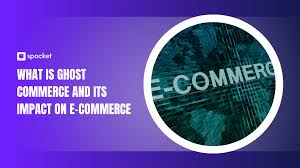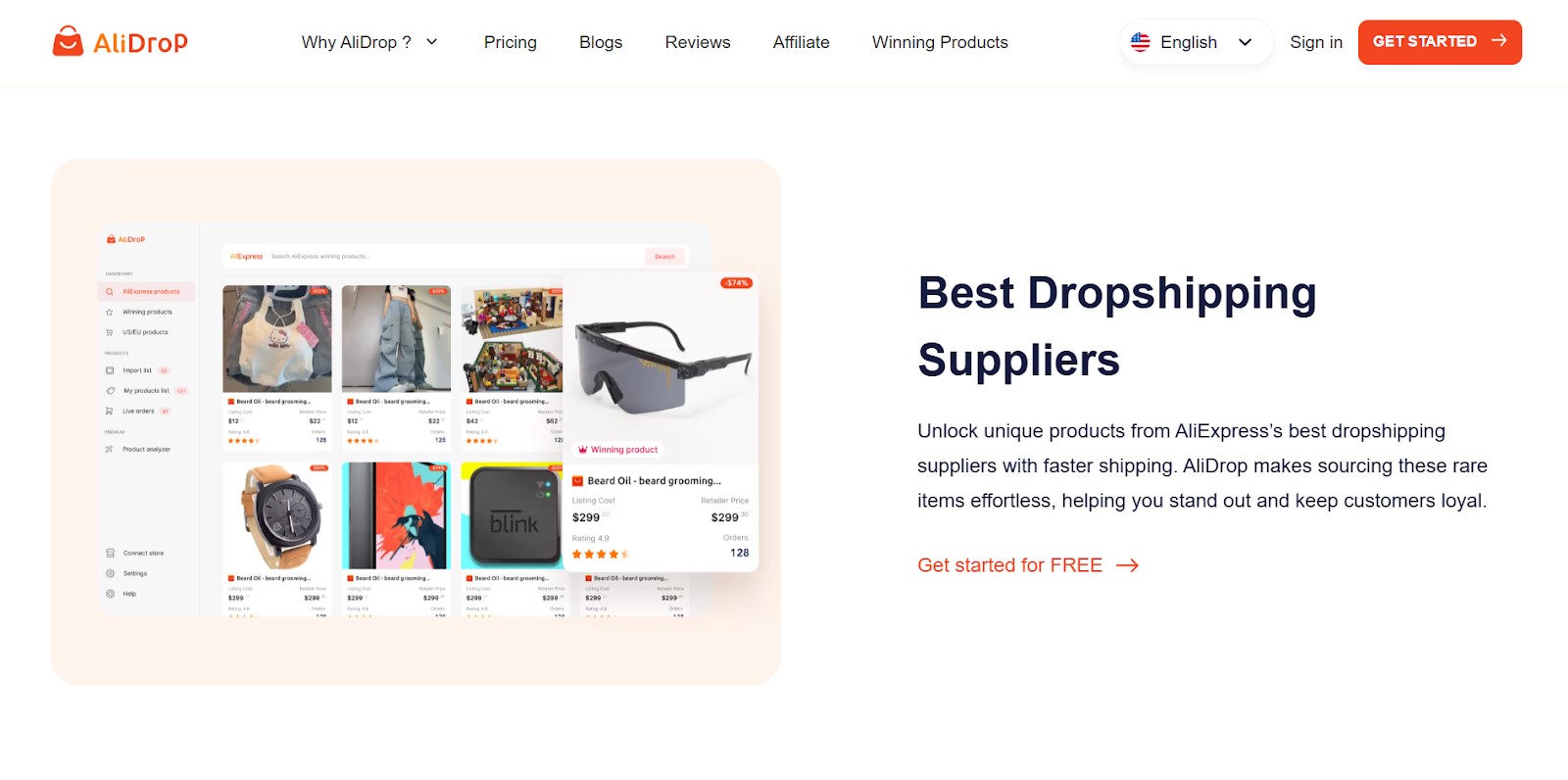Ghost Commerce: Building and Succeeding with Invisible Online Businesses

Strong 8k brings an ultra-HD IPTV experience to your living room and your pocket.
Build a hidden online empire with Ghost Commerce. Skip inventory hassles—focus on trust, dropshipping, and growth. Start your journey with these expert tips!
You may have heard the rumors on Reddit circulating: “Bah, ghost commerce is just another fancy word for affiliate marketing! It’s no big deal.”
But it’s not just that—it’s business with privacy. What if you could grow an empire behind the scenes? Your focus would shift from your partners to your audience.
A ghost commerce business will help you grow your influence and match people with products they love—all without cramming your garage full of boxes.
Are you new to ghost commerce dropshipping or interested? We’ll tell you what it’s about below.
What is Ghost Commerce?
Ghost Commerce is an online venture that allows you to promote and sell products without physically handling inventory. Rather than operating a traditional store, you become a connector between customers and third-party suppliers, often leveraging your online presence—through social media, blogs, or videos—to spark interest. When someone buys through your platform, your suppliers handle shipping while you earn a commission or markup.
This discreet approach is more than “affiliate marketing with a twist.” It’s about controlling your brand image and audience relationships without juggling storage space or shipping details. You channel most of your efforts into crafting compelling content, nurturing trust, and matching people with goods that solve their problems or spark their passions. If you’ve avoided eCommerce due to the hassles of inventory, Ghost Commerce could be your answer—low risk, lean operations, and the freedom to pivot whenever you spot new trends.
Embracing the “Invisible” Business Model
Traditional eCommerce ties you to a physical supply chain, leaving you responsible for stock levels, warehousing costs, and possibly leftover items that never sell. With Ghost Commerce, there’s no warehouse stress—your primary work is front-end: building credibility, spreading awareness, and guiding your audience to buy.
This “invisible” nature transforms the usual obligations of running an online store. You won’t spend nights figuring out shipping rates or packaging products; you focus on creating a brand experience that resonates. Because suppliers handle fulfillment, you minimize overhead and keep operations lean. If a product flops, you simply switch it out—no clearance sales or wasted investment.
At the same time, you’re still the face of your brand. People see you as the curator of items or experiences, so choosing reliable suppliers who uphold your standards is critical. This is a powerful setup: minimal logistics, maximum impact, and a brand driven by relationships rather than a mountain of inventory.
Essential Tools & Tech Setup
You'll need a streamlined tech stack to build and run your Ghost Commerce brand effectively. First, secure a user-friendly website or blog platform. Even if you’re primarily on social media, you still need a “home base” to post product info, announcements, or articles. Make it visually appealing, mobile-responsive, and easy to navigate.
Next, integrate a reliable payment system or referral tracking tool. You might earn from affiliate links, so your system should handle commissions or track clicks accurately. Data and analytics are also crucial: keep tabs on page views, audience demographics, and which products get the most traction.
Look for email software that automates welcome campaigns or newsletter updates for marketing. Staying in consistent contact drives repeat visits. Lastly, find an order notification solution that alerts you and your suppliers the moment a customer buys. The goal is frictionless communication throughout the entire process—so you can focus on marketing rather than tech headaches.
Why Ghost Commerce Dropshipping?
Dropshipping powers many Ghost Commerce ventures. In this setup, you don’t stock products. Instead, your supplier keeps inventory and ships the items after someone purchases through your link or online store. That means no overcrowded garage, no shipping labels on your dining table, and far fewer startup costs.
Dropshipping also offers impressive variety. You can list as many products as your supplier can reliably fulfill. If certain items fail, you can remove them with a few clicks—no clearing out unsold stock. This flexibility helps you test new niches without significant financial risk.
Not all suppliers are created equal, though. Seek those with prompt shipping times, quality control protocols, and solid communication. If your partner fumbles orders, your brand image takes a hit. That’s why some entrepreneurs gravitate toward suppliers with US and EU warehouse options for faster deliveries or print-on-demand (POD) services for custom branding. In short, dropshipping turbocharges your Ghost Commerce goals.
Pros & Cons of Ghost Commerce Dropshipping
Here are the pros and cons:
Pros
Minimal Overhead: Since suppliers handle storage, you avoid warehousing and fulfillment costs. Your most significant investments might be a professional-looking website and marketing.
Low Startup Risk: Traditional eCommerce can drain funds if items don’t sell. With Ghost Commerce, you only pay for products after a customer purchases, reducing financial strain.
Streamlined Focus: You’re free from shipping details and inventory headaches, allowing you to concentrate on building relationships, posting helpful content, or innovating your brand.
Scalability: Want to launch new product lines quickly? Just partner with additional suppliers or add fresh listings. You can grow without the logistic nightmares.
Cons
Slim Margins: The trade-off for low overhead is often smaller profit margins, mainly if you compete on price. You’ll need to find ways to stand out.
Less Control Over Quality: You’re trusting suppliers to meet your standards. If something goes wrong, your audience, not the third party, blames you.
Possible Shipping Delays: Delivery issues (like slow shipping or mix-ups) can harm customer satisfaction. Stay vigilant to maintain your brand’s reputation.
Brand Building Takes Time: Since you don’t have a physical presence, consistent marketing, strong messaging, and excellent customer care are vital to establishing credibility.
How to Overcome Common Obstacles?
Here’s how:
Sourcing Trustworthy Suppliers: Do some detective work. Order sample products to gauge shipping times, packaging, and item quality. Check your supplier’s communication track record—hesitations now can save you big headaches later. Consistent reliability keeps you confident in what you’re promoting.
Managing Customer Service: Customers don’t care that you’re not the one physically shipping the product. They’ll expect quick solutions if something goes awry. Provide multiple channels—email, social media, even a chatbot—so they can easily reach you. Keep return processes transparent and straightforward.
Standing Out Against Competitors: Ghost Commerce lowers the entry barrier, so fierce competition exists. Define a specific niche or adopt a unique brand voice. Whether you sell dog-themed accessories or eco-friendly kitchen gadgets, hone your focus to become a go-to resource.
Maintaining Cash Flow: Marketing spending can add up without upfront stock costs. Set a budget and track key metrics—like customer acquisition cost and average order value—to ensure you’re turning a consistent profit. Consider offering a modest upsell or subscription plan if your suppliers allow it, so you’re not relying on one-time sales alone.
How to Make Your Ghost Commerce Business Succeed?
You can follow these approaches:
Choose a Meaningful Niche: Instead of chasing every trend, pick a field you understand or love—like sustainable home goods, unique art prints, or athletic gear for specific sports. Your enthusiasm will show, and your audience will sense it.
Craft Great Content: Whether it’s Instagram reels, engaging blog posts, or quick TikTok tutorials, focus on storytelling. Show how products solve real problems. Educate, entertain, and connect rather than just “push” sales.
Use Authentic Social Proof. Gather real-life feedback, such as short quotes, pictures, or videos, from satisfied buyers. People trust others more than they trust ads; authentic reviews can tip someone from “maybe” to “yes.”
Optimize the Mobile Experience: Make sure your site or store is visually pleasing and functional on smartphones. If mobile users find it hard to browse or pay, they’ll abandon the experience. The fewer steps, the better.
Experiment Strategically: If you see potential, try new content angles or lesser-known social platforms. Monitor analytics. If something tanks, learn and pivot. If it thrives, scale up.
Affiliate Marketing: You can double your Ghost Commerce income by promoting certain products via affiliate links. Each time your audience buys through your referral, you earn a cut. This strategy pairs well with content-driven marketing—think product reviews, tutorials, or “favorites” lists that appeal to your niche.
Private Labeling or Print-on-Demand (POD): Suppliers with customization options let you add your logo or original designs to items. Brand recognition grows faster when buyers see a consistent name and aesthetic. If you’re building a community around a cause—like mindfulness or sustainable living—POD merchandise can boost brand loyalty and profits.
Memberships or Subscription Services: For passionate audiences, consider a members-only area packed with exclusive tips, discounts, or behind-the-scenes content. You can also partner with a supplier to create a themed subscription or purchase monthly snack samplers, skincare kits, or specialized gear.
Digital Offerings: eBooks, online courses, or downloadable templates expand your revenue streams without worrying about shipping. If you’re known for expertise in a particular area, digital tools can be a natural add-on.
Conclusion
Ghost Commerce dropshipping offers a lean, agile alternative to the traditional online store. You’re free from inventory chaos, focusing instead on genuine connections and strategic brand-building. Success here means picking reliable partners, producing thoughtful content, and helping your audience discover products they’ll love. Gather insights on your target market and test a few products. Learn from any hiccups—then refine. Over time, you’ll develop a brand that people eagerly follow.
Want to connect with the best US and EU dropshipping suppliers for your ghost commerce business? Try Spocket..co
Note: IndiBlogHub features both user-submitted and editorial content. We do not verify third-party contributions. Read our Disclaimer and Privacy Policyfor details.







